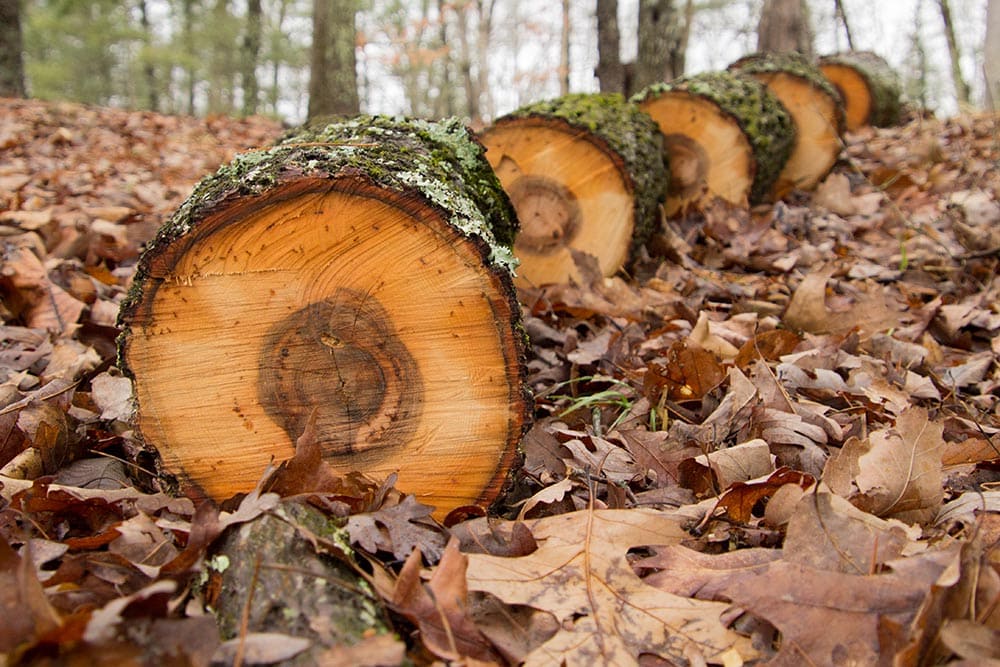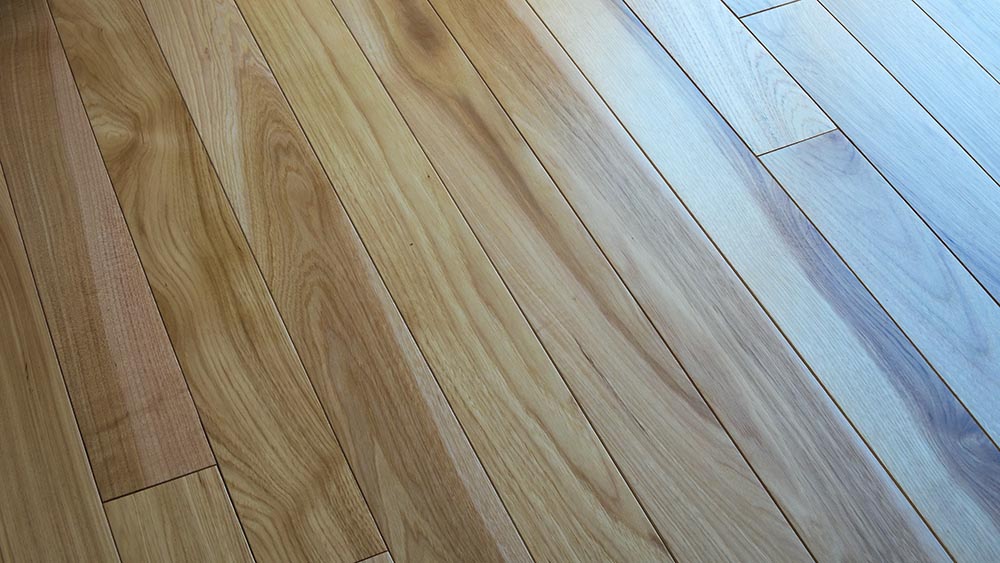Is Hickory a Hardwood? Pros, Cons & FAQ
-
Pete Ortiz
- Last updated:

If you’re looking for durable hardwood flooring full of character, hickory should be a top contender for your new installation. Hickory is incredibly sturdy and damage-resistant, and its varied pattern and rich coloration leave a stunning, lasting aesthetic. To help you appreciate this versatile material, we’ll discuss the basics of why hickory wood is such a prized flooring option.
Is Hickory a Hardwood?
By the technical definition, hickory is hardwood or wood from a deciduous tree. These trees usually grow flowers and broad leaves, losing their foliage in the fall. When pollinated, they produce nuts, fruits, or seeds. By contrast, softwood trees are usually evergreen conifers. These trees retain their needles and don’t flower like deciduous varieties.
Although they grow slowly and cost more than softwoods, hardwoods typically offer the highest density and resilience for various projects. You’ll often find hardwoods in high-quality flooring, furniture, and construction.
Hickory isn’t your typical hardwood; it’s one of the hardest you can find in North America! While it might be much softer than some of the densest exotic ironwoods in the world, hickory’s 1820 rating on the Janka hardness scale beats some of the most popular and high-quality wood options available, including hard maple, white oak, and beech.

Where Can You Find Hickory Trees?
Hickory trees (genus Carya) include around 18 species spread across the U.S., Canada, Mexico, East Asia, and India. Over 12 species are domestic to North America, and the most common varieties include shagbark, shellbark, pignut, and pecan. Many prefer moist soils, so you can often find them around streams and river banks.
Hickory trees are slow-growing, deep-rooted, and tall, with many species reaching peak heights of over 100 feet. They have long green compound leaves with 3–17 leaflets (always an odd number). Leaflets are oval-shaped with jagged edges. Pairs of leaflets run up either side of the stem, and the final one sits on the tip. The leaves can grow up to 2 feet in length.
Though hickory trees produce flowers and fruits, they’re likely not what you’d expect. The monoecious plant develops male and female flowers in separate areas. Male flowers are pollen-filled yellow-green catkins, with drooping tails covered in tiny, petalless flowers. Females grow in terminal spikes with 2–10 flowers.
The hickory fruit is a drupe, a thin-skinned and fleshy fruit holding a seed or kernel. It features a rock-hard, rough husk that often has four ridges running lengthwise from end to end. Not all hickories produce edible nuts, but popular varieties such as shagbark, shellbark, and pecan trees have earned their popularity for their delicious fruits.

Is Hickory Good for Flooring?
Hickory is an exceptional flooring choice because of its durability and vibrant colors and patterns. Its rich hues range from light creams to deep chocolate browns. The texture is equally complex, with individual planks often containing assorted grain patterns, streaking, and knots. It supplies an eye-catching rustic appearance, but you can also adjust and smooth the tones with stain.
The mixed forms and intense color contrasts of hickory flooring are highly appealing to many homeowners. It can be an essential selling point for the right buyer, helping raise your home value. The variation can also be a drawback for some individuals. It’s common to find hickory floor boards cut in wider planks to tone down the mixed appearance.
The warm elegance of a hickory floor endures thanks to its high density and hardness. It resists everyday scratching and scuffing from pet nails, heels, and furniture legs much better than other domestic hardwoods. Staining is also easy. You can add gorgeous coloration and sheen in a protective, water-resistant cover, enhancing the floor’s already durable composition.
Considering its lasting benefits, it’s not surprising that hickory is relatively expensive among hardwood flooring options. Solid hickory flooring runs around $4–$8 per square foot, about a dollar more per square foot than other popular varieties like oak. But given the quality, unique look, and enhanced strength, authentic hickory flooring is nevertheless a high-value investment.
Hickory wood has a range of practical uses beyond flooring. The extreme hardness and ability to absorb impacts make it ideal for tool handles and sporting gear. Hickory acts as an excellent fuel, and its chips are a preferred option for adding flavor while smoking, grilling, and curing meat.
- Attractive rustic aesthetic
- Extremely hard and resistant to marring
- Low-maintenance
- Readily accepts stains, easy to adjust coloration and luster
- Slightly more expensive than other domestic hardwood flooring options
- Intense color and pattern variation can be off-putting to some people
- Not as eco-friendly as more common hardwood varieties
Conclusion
Hickory may not be the first hardwood that comes to mind when considering a new floor, but it’s sure to be one of the first to catch your eye when you visit your local home improvement store.
The gorgeous, lively colors and textures of genuine hickory floors add a luxurious rustic appeal to the home, and the durability is hard to beat at its price point. As one of the best hardwoods to stain and wax, the possibilities for a unique custom look with solid hickory hardwood flooring are endless.
Featured Image Credit: LisaCarter, Shutterstock
Contents



